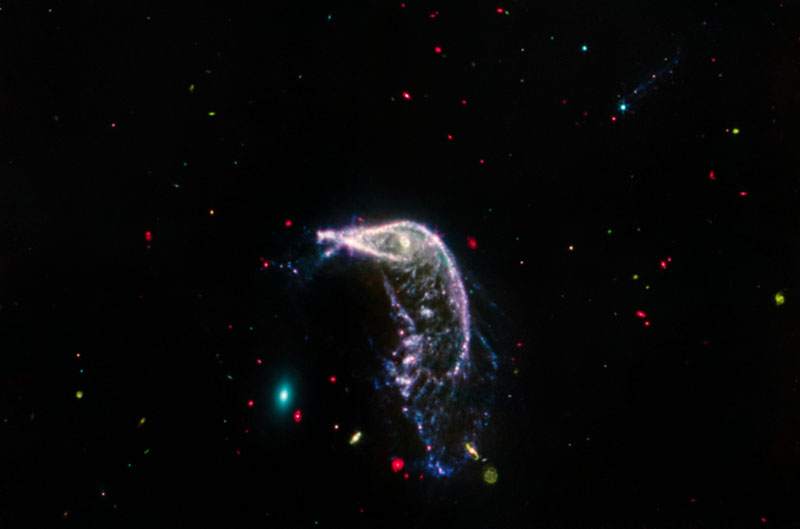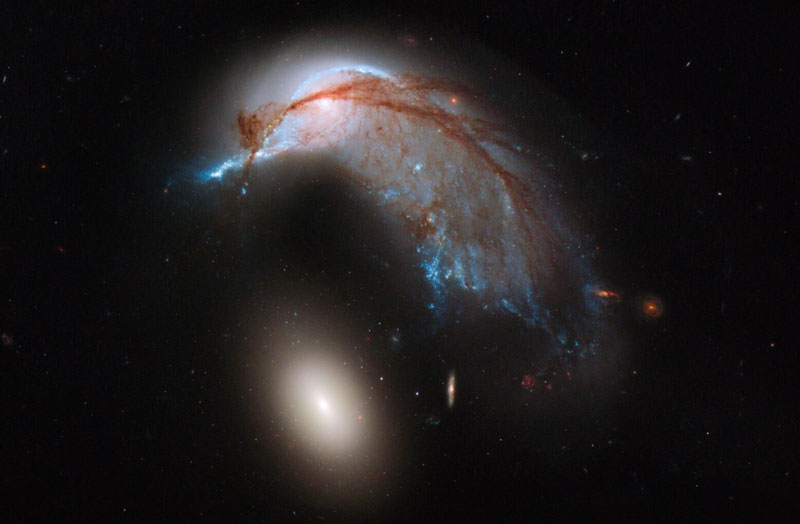Last Thursday, the Space Infrared Observatory named after. James Webb celebrated two years of scientific work. The anniversary photograph taken by the telescope was dedicated to this date and revealed all the capabilities of Webb’s infrared instruments: cameras in the near and mid-infrared ranges. Thanks to them, the image of two distant colliding galaxies – the Penguin and the Egg – sparkled with new colors and details.

Composite image of Arp 142 galaxies. Image source: NASA; ESA; CSA; S.T.Sc.I.
The Penguin and Egg galaxies (Arp 142) are 326 million light years away from us. They are located in the constellation Hydra at a distance of about 100 thousand light years from one another. About 25–75 million years ago, the elliptical (NGC 2937) and spiral galaxy (NGC 2936) converged: the Egg and the Penguin. The first, with its gravity, unwound the second, and after hundreds of millions of years they will merge into one galaxy.

Image with MIRI device (mid-infrared range)
The gravitational interaction of the two galaxies turned the spiral galaxy into something like a penguin with a beak and tail, guarding its egg. In the clouds of dust and gas washed away by gravity from the spiral galaxy, bursts of star formation appeared. The elliptical galaxy that caused all this movement, on the other hand, is populated by old stars and both of them are surrounded by a haze-like halo of polycyclic aromatic hydrocarbons.

A photograph of the same galaxies using the Hubble telescope